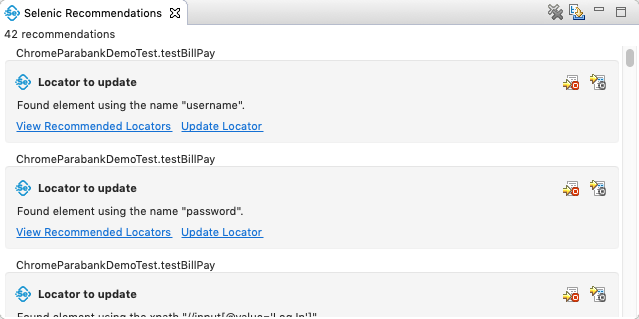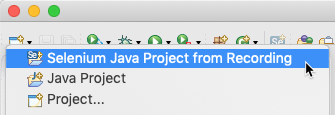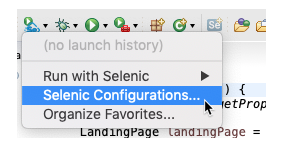The Selenic IDE plug-in includes a perspective, view, and run configurations settings panel to help you leverage Selenic functionality. In this section:
Selenic Perspective
The Selenic perspective changes IDE menus and views to provide easier access to Selenic functionality. Switch the Eclipse perspective to the Selenic Perspective after installing the Selenic IDE plug-in.
- Choose Window> Perspective> Open Perspective> Other... from the Eclipse menu.
- Choose Parasoft Selenic and click Open.
After you open the Selenic perspective for the first time, you can switch to it quickly by clicking the icon in the perspectives group.
Selenic Recommendations View
Run a test to populate the Selenic Recommendations, which shows the element locators Selenic identified and recommendations for updating them. See Viewing Recommendations in Eclipse for details on how to use the Selenic Recommendations view.
If you have access to the recommendations file, you can click the Import Recommendations link and load the recommendations without executing the test. In an automated test execution workflow, for example, you would need to import the recommendations from the test server. You can also specify the file's URL so that you can import a remote file hosted on a build server if Selenic is running through a remote build system. See IDE for command line usage.
Selenic Toolbar
The Selenic toolbar provides quick access to Selenic functionality.
Selenium Project and Test Wizards
When using the Selenic perspective, the new item button includes direct links to the Selenium Java Project from Recording and Create Selenium Test from Recording wizards. See Usage for additional information.
You can select the src package directory to enable the Create Selenium Test from Recording button.
Support and Feedback
The tool bar contains links to the Parasoft forum and a feedback form.
Selenic Run Configuration Launcher
Select a test, package, or project and click the Selenic run configuration launch button to quickly create a Selenic run configuration with default settings (also see Creating a Run Configuration with Default Settings).
The button also has a drop-down menu that also opens the Selenic run configurations screen (also see Manually Creating Run Configurations).








